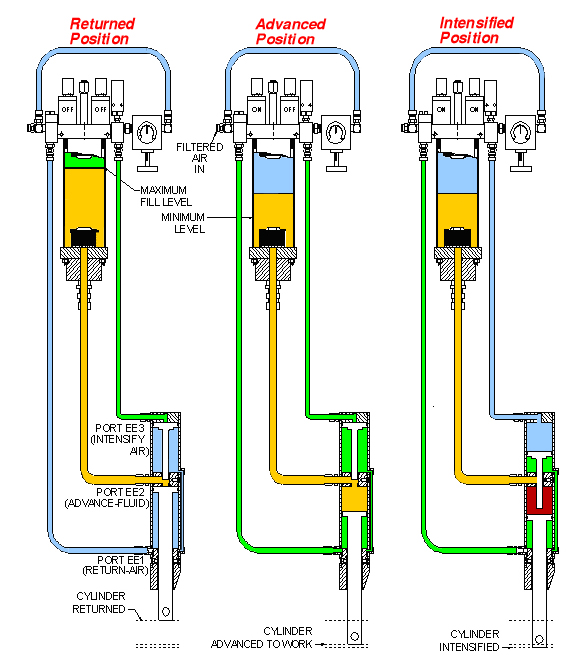
Movement of the "Ohma® Cylinder"
Stage 1: Cylinder At Rest Position:
At this stage, return air pressure is present at the Return Port (Port EE1) to maintain the working piston and intensifier piston retracted. Port EE3 (Intensifier Port) and the fluid reservoir are vented to atmosphere. Ports EE1 and EE2 are operated with an advance/return valve and EE3 is operated with an intensification valve.
Stage 2: Low Pressure Advance:
To initiate the low pressure advance stroke, air pressure is directed to the top of the fluid reservoir to force fluid to move into the OHMA cylinder via Port EE2 (Advance Port). The low Pressure fluid causes the working piston to stroke forward at low pressure. Ports EE1 and EE3 are vented to atmosphere.
Stage 3: Power Stroke (weld stroke):
Regulated air pressure is applied to Port EE3 to drive the intensifier piston forward. The piston advances through the middle separator to block incoming fluid at EE2 and seal the OHMA cylinder fluid chamber. As the intensifier piston strokes into the fluid, trapped fluid is displaced to produce the power stroke.
Return Stroke:
To return the cylinder to rest position air pressure is again directed to Port EE1 while EE2 and EE3 go to atmosphere pressure simultaneously. This causes both pistons to return to their retracted positions.
Legend:
|
Blue: Air |
Yellow: Fluid |
Red: Fluid under Intensified Pressure |
Green: Exhaust |
Centerline (Windsor) Ltd

